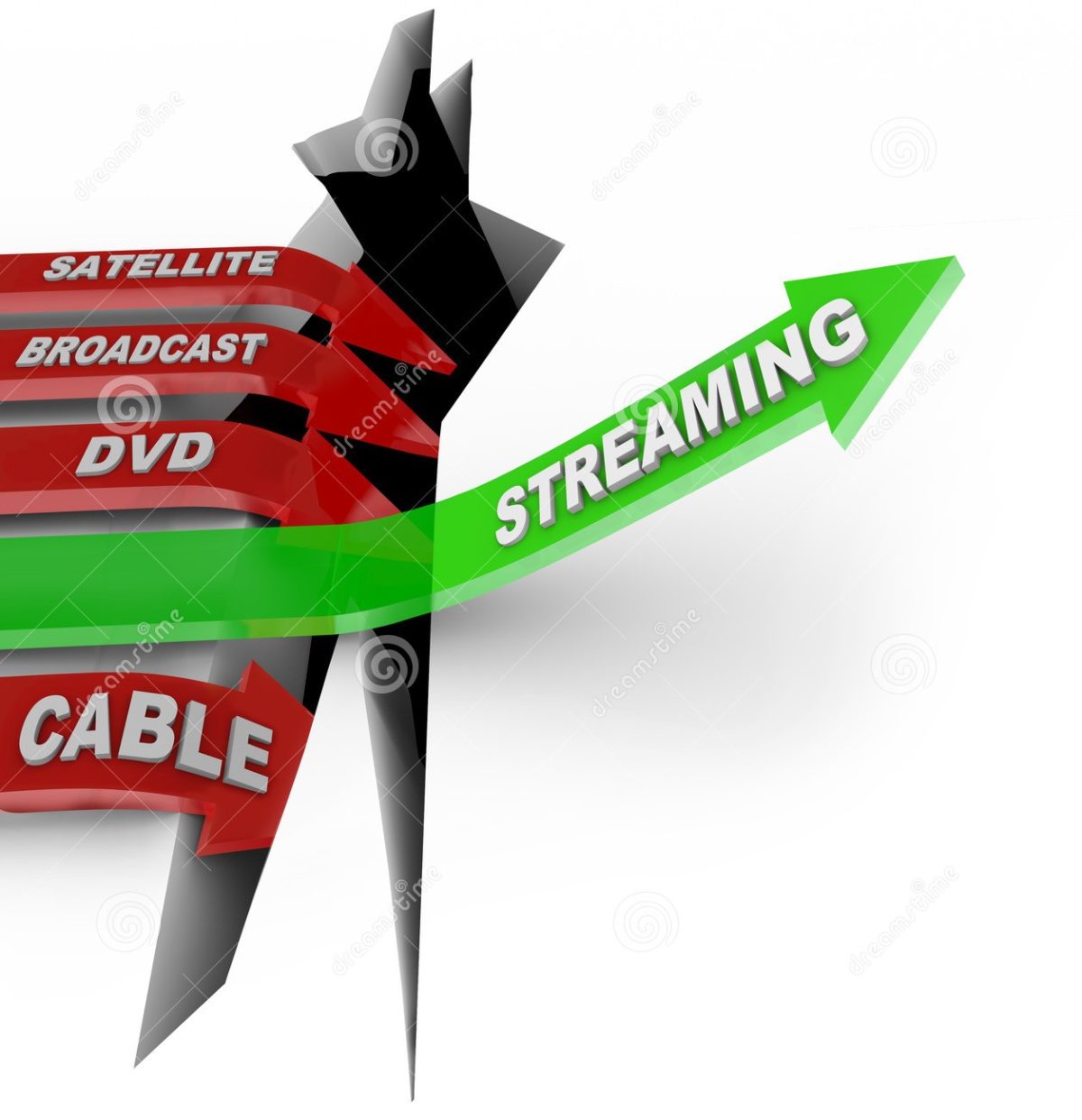Tens of millions watched the recent Mayweather vs. McGregor fight on pirate streams. According to VFT Solutions, which monitors live streams in social media, over 7000 live streams were being watched in social media platforms by roughly 100 million viewers. (Granados, 2017)

How many of you do still pay for cable TV to watch live sports? In the first quarter of this year a record number of people cancelled their pay TV subscriptions and the number continues to slip at the fastest pace ever (Gallagher & Elder, 2017). The number of losses would have been greater, if it wasn’t for sports programming. Over the last few years, people have been talking about the inevitable disruption of the television industry and the threat of new streaming models, like YouTube, Netflix, Hulu and Amazon Video. Telecom companies have seen their revenues switch from pay TV to their broadband Internet services. In the past, a large share of revenue was generated by traditional TV subscription, whereas now steaming video services have become more profitable. This shift in consumer preferences summarises the TV industry disruption.
According to a research by CouponCabin.com 43 percent of cable TV subscribers say that the only reason they still pay for TV subscriptions is for watching live sports (Nooney, sd). Live sports is a major factor keeping people tethered to their cable TV plans and is often referred to as “the last bastion of traditional pay-television.” (Ryan, 2017)

To give a few examples of live sports migrating to digital platforms, Amazon has been negotiating with some of the U.S.’s biggest sports leagues to acquire the rights to stream sport games. It reportedly paid $50 million to the NFL to stream 10 Thursday night NFL games (DiPietro, 2017). Soccer club AC Milan signed a partnership with live streaming app Sportle, a sports start-up that is changing the way people watch sports. Tech giants are pouring money into acquiring content rights. YouTube secured a deal to broadcast the UEFA Champions League in the UK. This year, Facebook signed multiple deals to broadcast Major League Soccer matches, MLB games and World Surf League events. Meanwhile, Twitter is streaming the WNBA games and exclusive MLB program (Tran, 2017). You might be asking yourself what Netflix is doing. According to the critics, Netflix will not be joining anytime soon. Netflix stays close to its long-term mission saying that they are not a generic “video” company that streams all types of video, such as sports. They want to stay a movie and TV series entertainment network (DiPietro, 2017).
Social media platforms consider live sports as a key catalyst to drive user engagement, growth and eventually revenues. One of the biggest goals for 2017 is to create a social experience around live sports. In February Facebook announced a new app for set-top boxes, including Apple TV, Amazon Fire TV and the Samsung Smart TV. This app enables you to watch Facebook videos on a big screen, which is immensely important for watching live sports. (Forbes, 2017) Summarising, live streaming is one of the biggest social media trends in general, but it reaches it peaks around major sports events.
Resources
DiPietro, F., 2017. Amazon and Twitter Are Streaming Sports. Will Netflix Follow?. [Online]
Available at: https://www.fool.com/investing/2017/04/22/amazon-and-twitter-are-streaming-sports-will-netfl.aspx
Forbes, 2017. Why Facebook Is Focusing On Live Sports. [Online]
Available at: https://www.forbes.com/sites/greatspeculations/2017/02/23/why-facebook-is-focusing-on-live-sports/#546a27c82dc6
Gallagher, K. & Elder, R., 2017. Pay-TV subscribers continue to slip. [Online]
Available at: http://www.businessinsider.com/pay-tv-subscribers-continue-to-slip-2017-5?international=true&r=US&IR=T
Granados, N., 2017. Tens Of Millions Watched Mayweather Beat McGregor On Pirate Streams. [Online]
Available at: https://www.forbes.com/sites/nelsongranados/2017/08/28/tens-of-millions-watched-mayweather-beat-mcgregor-on-illegal-streams/#7b4bca5179a3
Nooney, C., sd The Future of Sports Streaming In a Cord-Cutting Age. [Online]
Available at: https://www.wired.com/insights/2014/06/future-sports-streaming-cord-cutting-age/
Ryan, K. J., 2017. 5 Industries Ripe for Disruption in 2017. [Online]
Available at: https://www.inc.com/kevin-j-ryan/industries-ripe-for-disruption-in-2017.html
Tran, K., 2017. Facebook is becoming a go-to platform for live streaming sports. [Online]
Available at: http://www.businessinsider.com/facebook-becoming-go-to-platform-live-streaming-sports-2017-6?international=true&r=US&IR=T




